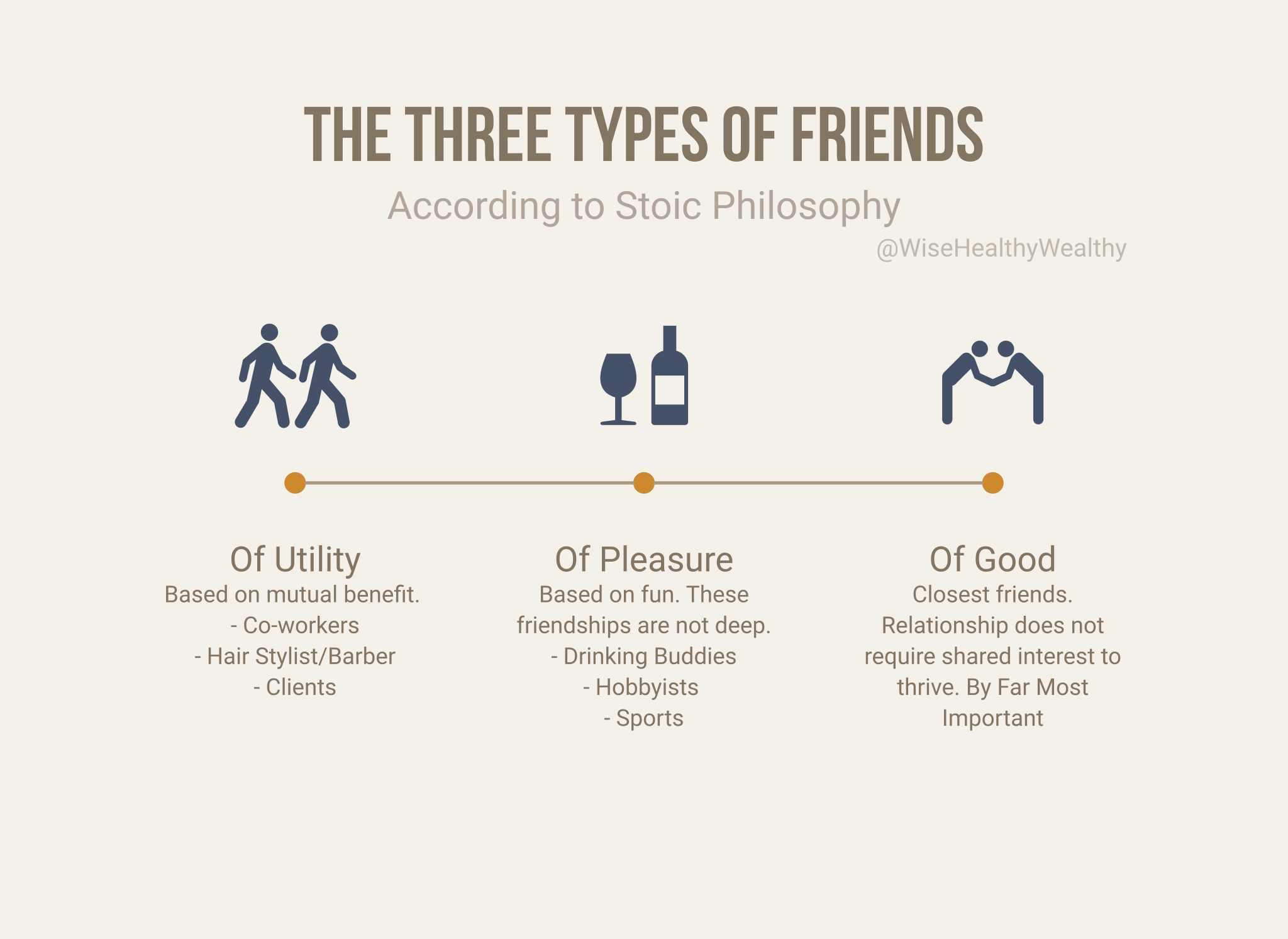What The Stoics Believed and How I intend to Apply It
 Image by Eric Nopanen on Unsplash
Image by Eric Nopanen on Unsplash
?Lots of people want to ride with you in the limo, but what you want is someone who will take the bus with you when the limo breaks down.? ? Oprah
Of the many subjective questions to discuss, this one has been rattling around inside my brain lately.
What does true friendship look like? What kinds of different friendships are there? How can I create a better life through better friendships?
I ask myself these questions because the Stoics believed that part of living a better life was to invest in ?truly good? friendships. This theory of friendships is credited to Aristotle but seems to be a shared theme among many ancient Stoics.
According to Stoic philosophy, the human tribe has established three different types of friendships
- Friendships of Utility
- Friendships of Pleasure
- Friendships of The Good
These are the three layers of friendships built into our society.
Friendships of Utility
 Image by Firza Pratama on Unsplash
Image by Firza Pratama on Unsplash
The first layer of friendship that humans usually build is a friendship of utility. This is a relationship where there is a transparent exchange of value.
Some examples of utility based friendships are:
- Coworkers at a job
- A server/client relationship like a Barber or Hair Stylist and their client
These people aren?t exactly friends in the current sense of the word, but they are a necessary baseline relationship in society. The mutual value assumed from the interaction creates a situation where you both, for the time being, share a common ground, will get along, and converse.
These relationships are shallow at best but create an important connection throughout a community.
Friendships of Pleasure
 Image by Analise Benevides on Unsplash
Image by Analise Benevides on Unsplash
This doesn?t translate that well from Latin, but pleasure in this sense just means enjoyment in the here-and-now.
This is a friendship that has moved beyond mutual value, to shared enjoyment in some way. You may not get anything directly from the person you are around, but they are there with you, enjoying the same thing you enjoy, and so you come together under that commonality.
Some examples of Friends of Pleasure could be:
- Drinking friends
- A consistent poker group
- Even an online gaming guild/clan
These friendships are still shallow and are subject to change at the slightest provocation.
These might be your ?fair weather? friends or the people that are around when life is easy and fun but are not worth counting on to be there for you in a crisis.
?Wishing to be friends is quick work, but friendship is a slow ripening fruit.? ? Aristotle
Friendships of The Good
 Image by Joshua Sazon on Unsplash
Image by Joshua Sazon on Unsplash
In current English, these are your best friends, your ?ride or die? people.
The friends that you have a deep connection with, and can have a truly engaging conversation.
With these friends, there?s no assumption or obligation of a good time. They genuinely care about your well-being and will enjoy spending time in your presence, always wanting what is best for you.
?I don?t need a friend who changes when I change and who nods when I nod; my shadow does that much better.? ? Plutarch
In the minds of the Stoics, this is the only group that deserves the title of Friend.
These glorious people are rare, and these relationships usually must be cultivated from either a utility or pleasure based friendship.
So What Determines A True Friend?
The Stoic philosopher, Aristotle?s, framework makes this pretty clear.
A true friendship is one that is not based on utility or pleasure, but rather mutual respect, admiration, and gratitude of the other person. This type of friendship is one that must grow over time.
Utility and pleasure are temporary, and any relationship built on such a weak foundation is doomed to fall. Think about how many romantic relationships fail before they ever really start since they are often predicated on the temporary nature of utility or pleasure.
A true friendship is built on shared principles and shared virtues.
This is the kind of friendship that can become stronger with time.
I can say I have been blessed with several ?true? friends. Men and women that have believed in the person I was, as well as the person I could be. Through depression, crippling anxiety, career-jeopardizing inaction, these people have never wavered.
To those of you who are a part of this group. Thank you for believing in me.
If There Were Only 150 People

There is a cognitive limit to the number of people you can keep track of in your head and still maintain some sort of a relationship.
This number is 150. So, if there were only that many people, everyone would fall into one of the three stoic friendship categories.
Fortunately for us, there are far more than just 150 people in the world, so we have the constant opportunity to upgrade that network.
Based on numbers alone, your 150 will consist mostly of Tier 1 (Utility) and Tier 2 (pleasure) friendships.
The idea I have is, how would life look like for someone that attempted to cultivate more and more true-friends.
This pursuit would last a lifetime, but if it were possible to do, then over time life would gain more meaning as more true friends entered and stayed in your life.
This is a worthy pursuit. Who has time for shitty friends, anyway?


